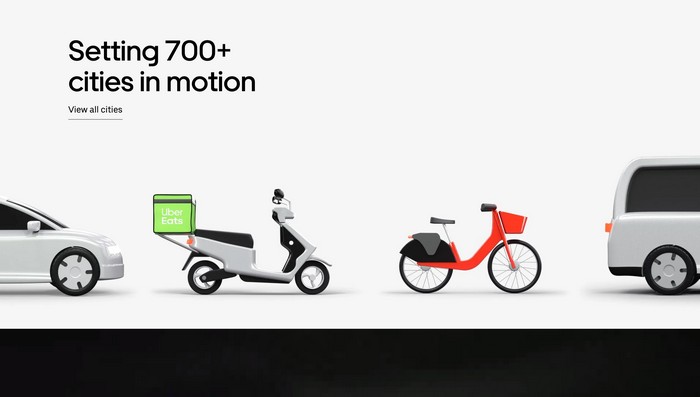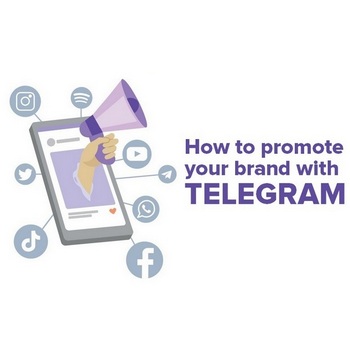In this new article, we are talking multilingual websites, what they are, what is required to set up, and if you really need to go for a multilingual website with your business?
Let’s get started!

Speak My Language
Having a website that features copy only in English makes sense: after all, it seems like the global lingua franca.
However, did you know that only 20% of the world population speaks English?
That leaves a vast majority of potential customers who cannot buy your product or service because they don’t understand your website.
While English is the top language to learn, people still like to use their native language when making a purchase.
Of course, not every business targets audiences outside their region and, potentially, you may not even need a multilingual website.
It’s important to consider your needs and weigh all the factors first, particularly because designing one is a challenging process.
So, here is everything you need to know about multilingual websites and how to make them.
How can your business benefit from a multilingual website?
The most important way a multilingual website can help your business is by building a larger audience base that extends beyond your native language area.
How much do you want to expand depends on your target audience and the need for your product in other countries?
China, for example, is an enormous market with 1.2 billion native speakers.
There are also millions of Spanish and Russian speakers with whom your website can communicate.
Another valuable benefit of a multilingual website is having a better rank among industry-related websites.
Potential customers would be able to find you on different search engines such as Google, Bing, and even the Chinese Baidu and the Russian Yandex.
And when it comes to customer-centricity, there’s no better way to prove that you’re putting your customers first than by engaging them in their native language. Furthermore, you will build trust and show appreciation for your audience.
Consequently, this will improve your brand image and help you outdo the competitors.
Do you really need a multilingual website?
Now that you’ve read the benefits of a multilingual website, you have a clear image of what you’re getting.
But, do you really need all these perks?
If you’re a small business owner operating locally, you probably have no need for all these complications.
However, if you, for example, own a restaurant in a hot tourist area, and you’re expecting to attract foreign guests, it would be wise to offer them a menu in their languages.
Also, you need to be aware that this is an additional cost and it requires constant work.
If you are offering your audience a multilingual website, you need to give them the option of having customer support in the same language.
Now, if you’ve considered all the ups and downs, and decided you definitely want to build a multilingual website, we can move on to the guide.
In this new article, we are talking multilingual websites, what multilingual websites are, what is required and if you really need to go for a multilingual website with your business?Click To Tweet
Consistency matters
When you need to make different pages for different languages, it’s easy to forget that you need to keep your branding on point at all times.
Visitors need to have the same user experience regardless of the page they land on, and they need to be able to recognize your brand right away.
The layout, design elements, and branding need to be the same on every page.
Weglot (WordPress) is very good for seamlessly integrating different languages with one theme.
Weglot even automatically translates your content.
It can also integrate with other plugins.
Airbnb is a great example of a multilingual website that maintains a consistent brand image regardless of which version you’re looking at.
Help users switch languages easily
When a user who is not familiar with the language on your website visits, they need to be able to find the language switcher easily, so make sure you place it in a prominent location on the site.
Most often, the language switcher is located in the header or the footer of the homepage.
Also, switching options need to be clear and easy to understand.
Some websites feature symbols (flags to indicate the native country of a given language), while others name all the available languages in a drop-down box.
So, which one is better?
Flags can be particularly problematic with countries like Belgium or Canada, where there’s more than one official language.
Also, in the drop-down box, flags can seem too small for visitors to recognize or differentiate between similar ones.
Using words to indicate a language is a safe bet, but using both the flag and the name of the language might be the best way to go.
Give visitors the freedom of choice
Some websites, such as Adobe’s site, force the users who switch the language to switch their region as well.
But what if a Russian customer wants to purchase your product while being in London, and still wants to read in Russian?
Just because someone speaks a certain language doesn’t mean they live in a country where that language is native.
Give the website users the freedom to choose from themselves.
A good example of this? Definitely Uber.

Consider regional language differences
US English and British English have many differences that can lead to numerous confusions.
For example, the British say “flat”, while the Americans say “apartment”.
Likewise, many Spanish words are different in Spain and Latin America, especially when it comes to food and clothes.
Portuguese is not the same in Brazil and Portugal.
Because of these differences, you need to pay special attention to the rules that apply to different regions.
Be careful with autodetection
Autodetecting the language of the web browser is recommended to save time for you and for the site users. However, it isn’t an exact science, and sometimes it can lead the users to the “wrong” version of your website.
Also, the user might be a Spanish speaker who is a tourist in France, and if the autodetection turns on the French version of the website, they won’t understand a thing.
While you can include this feature that is, at times, useful, you should also provide visitors with the option of switching the language by hand.
The issue of text expansion
When content is translated from one language to another, the length of the original content and the translation could very well be changed.
This can lead to a set of new challenges when it comes to laying out the design and fitting the words into a specific space.
For example, languages like Japanese and Chinese are very concise.
They use only a few symbols to convey something that would require at least a five-word sentence in a language such as Spanish or English.
Languages like Italian, French, and German are even wordier, and they sometimes require much more space than others.
The only way to prevent this from becoming a problem for your site’s design is by creating a flexible and adaptive layout, so the text doesn’t look awkward when translated.
Here are some tips:
- Avoid fixed-width boxes.
- Don’t include tight squeezes.
- Separate the presentation and the content.
- Be careful when fitting text into graphic designs.
If you find that space remains a problem, try making less literal and more contextual translations of the pages.
You can also simply change the font size for different languages.
Be sure the fonts are compatible with the languages
The web fonts you decide to use must be compatible with all the languages that your website supports, which is something you’ll need to pay attention to when it comes to non-Latin based languages.
Otherwise, you’ll likely end up with missing characters in your text.
Most of the fonts support all Latin scripts, but not Cyrillic or RTL, so check all the languages you have included and see whether the fonts are compatible with them before you download them.
Another thing you need to have in mind is that some languages have hundreds of characters.
This can make the font files enormous in size, so you will have a limited choice if you don’t want to burden your website with so much data.
Do not forget the right-to-left (RTL) languages
Arabic, Aramaic, Hebrew, Persian, Syriac, Kurdish, and several other languages are written from right to left.
While you can just exclude these languages, you cannot ignore the fact that more than 300 million people speak Arabic.
Arabic is the fifth most spoken language in the world.
The easiest way to make your website design adequate for right-to-left reading is by using a mirror effect.
There are two ways to do it:
- use CSS or DIR Attribute
- use the Flexbox
For a more detailed guide, you can read the article Right-To-Left Development In Mobile Design by Robert Dodis.
When including phone numbers, note that they are read from left to right, but the phone icon is located on the right side of the figure.
Weglot supports right-to-left languages and you can adapt your site layout to include them. Some of the available RTL languages are Arabic, Persian, Hebrew, and Urdu.
Use culturally appropriate visuals and colours
Icons, images, graphics, and other visuals are essential elements of any website.
But, when placed in a specific cultural context, the visual elements can mean entirely different things and can be interpreted in a way that isn’t necessarily positive for your brand.
Images and icons that may seem innocent to Western audiences can have the potential to offend the population of other countries.
In some parts of the world, women’s rights are not fully recognized and showing “skin” is considered to be not only tasteless but also forbidden.
It can be the same with images showing homosexuality.
Clothing is particularly important in countries where the majority of the population is Muslim, so make sure you respect their beliefs.
So, when you decide to include a language, try to do research on regional and cultural sensitivities before you design a layout.
Colours, too, are interpreted differently across the globe.
They are interpreted subjectively and based on cultural context.
While red symbolizes happiness, love, and energy in Asian and Western culture, in African countries it is associated with rage and death.
If you don’t want to take any risks, blue is the safest way to go. It is the most widely accepted colour with positive associations in all cultures.
Not only that, but blue is also considered to be a great choice for representing trust and authority in visual design.
Dates and units of measurement
Date formats are different in the U.S. (month-day-year) and Europe (day-month-year), so this is something to be very aware of when designing pages for different languages.
If your products require units of measurement for precise description, you should translate them depending on your target audience.
Most of the world uses the metric system, but the U.S., Myanmar, and Liberia use the Imperial system of measures.
Choose the right translation plugin
There are a lot of translation plugins and they work differently with different designs. We’ve already mentioned Weglot as a good choice for seamlessly integrating several languages into your web page.
This plugin ensures that your text is automatically translated even if your site is highly customized.
With Weglot, the location and the design of the language switcher are fully customizable.
The default button can fit into every site design, but you also have the option of styling it via custom CSS.
This plugin also supports more than a hundred languages, including some of the right-to-left languages. It is also possible to order professional translations.
Other translation plugins for multilingual sites that can translate various aspects of your website while being simple to use are TranslatePress, WPML, PolyLang, and MultilingualPress/
Most common multilanguage website mistakes
Many businesses undertook this endeavour without sufficient considerations, inevitably falling into some predictable traps.
Here are the most common mistakes to avoid:
- Using automatic translation programs for complicated content, such as blogs
- Not conducting culturally relevant research when targeting the audience
- Focusing SEO efforts exclusively on Google (don’t ignore the Chinese and the Russian market!)
- Failing to make updates for non-English pages
- Not providing customer support to non-English-speaking customers
To sum up…
Designing a multilingual website is not a one-day job. However, considering all the benefits your business can get by expanding to other markets, it is a job worth doing.
So, have you considered enriching your page with other languages?
Do you have any more doubts after reading this article?
Maybe you have some other useful tips?
Please share all of them with us in the comments!
Regards Dexter
Related Articles
Your Digital Marketing Budget: What You Must Know As A Small Business Owner
Best Social Media Tools – Here Are 17 To Get You Started
How to Start A Successful Dropshipping Business: Beginners Guide











Maazia
Interesting insights! Plus consistence surely matters. Despite all the points you’ve mentioned the most important one remains a brand being able to reach out to different markets. Just a simple yet complex change in a business website can lead towards profitable results. Maybe I am only keeping the end goal in mind which is exactly why i needed to read this piece, this was an awesome read Dexter! 🙂
Jean Francois Charpenet
Hi Dexter!
Excellent article concerning mutiple language websites ! When I think about translating content on my website (which I haven’t started yet) I thought it was very simple. Just finding a simple plugin. But ready your article I realize there is so much more that needs to be thought through !
So thank you for all your tips.
Mr. SEO
I like the idea it give me more information. Im expecting more informative article like this.
pandoraappapk
You’ve been busy!
That’s what a successful blogger does, though.
Keep up with the changes, grasp what’s new.
But don’t forget to take care of the content you already worked so hard to publish.
Revamp, update, or even eliminate those that no longer fit your core message or business model.
Keep it relevant, for sure.
apparaty-na-dengi.club
Good article! Now i know what is required to set up and if I really need to go for a multilingual website with my business! I subscribe on your BloG!
Evan Bates
Yes, now I know that my business really needs a multilingual website. It can help my users understand my business well.
Bev
The aforementioned blog is very educational. Please keep on sharing and posting more articles of yours with us. I am thankful to you! Cheers!
Digital roy Academy
Nice Blog. Thankful to you 🙂
Christiny
Right now, my business doesn’t need a multilingual website, but in the future, I will try to expand it, so I will need to make it multilingual.